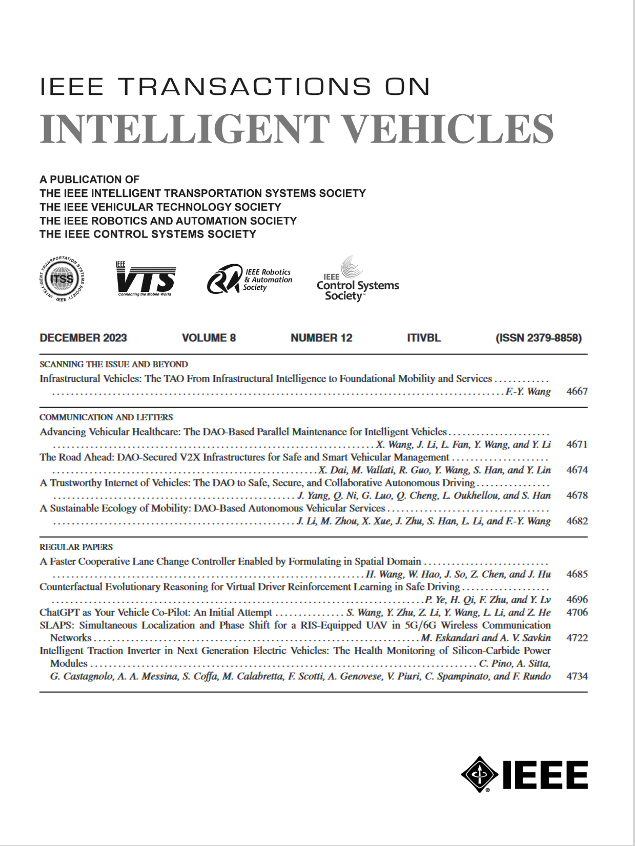行人过马路意图预测的行人-车辆信息调制
IF 14.3
1区 工程技术
Q1 COMPUTER SCIENCE, ARTIFICIAL INTELLIGENCE
引用次数: 0
摘要
行人过马路意愿预测(PCIP)对自动驾驶车辆中行人的安全至关重要。现有的方法没有使用行人和汽车之间的相互作用来进行预测。在本文中,我们认为行人的意图高度依赖于他们与环境的相互作用。具体来说,行人的轨迹和车辆的动态共同影响着未来的整个交通环境。因此,本文提出了一种新的行人-车辆信息调制网络(PVIM)。特别是,我们首先提出了一个行人-车辆空间背景(PVSC),它有效地模拟了行人和自我-车辆之间的空间动态。其次,我们设计了一个时间双线性注意模块,该模块消除了时间冗余并巩固了时间相关性,以获得更准确的预测。我们对PIE行人行为预测基准进行了广泛的实验,并取得了最先进的性能。具体来说,该方法的准确率为0.91,比之前的最佳准确率高出2%。本文章由计算机程序翻译,如有差异,请以英文原文为准。
Pedestrian-Vehicle Information Modulation for Pedestrian Crossing Intention Prediction
Pedestrian crossing intention prediction (PCIP) is crucial for pedestrians' safety in autonomous driving. Existing methods do not use the interaction between pedestrians and cars for their prediction. In this paper, we argue that pedestrians' intentions are highly dependent on their interaction with the environment. Specifically, the trajectories of pedestrians and the dynamic of vehicles jointly affect the entire traffic environment in the future. Therefore, in this paper, we propose a novel pedestrian-vehicle information modulation network (PVIM). Particularly, we first propose a pedestrian-vehicle spatial context (PVSC) that effectively models the spatial dynamics between the pedestrian and ego-vehicle. Second, we design a temporal bilinear attention module that removes temporal redundancy and consolidates temporal correlation for more accurate predictions. We have conducted extensive experiments on the PIE pedestrian action prediction benchmark and have achieved state-of-the-art performance. Specifically, the proposed method achieves an accuracy of 0.91, outperforming the previous best by 2%.
求助全文
通过发布文献求助,成功后即可免费获取论文全文。
去求助
来源期刊

IEEE Transactions on Intelligent Vehicles
Mathematics-Control and Optimization
CiteScore
12.10
自引率
13.40%
发文量
177
期刊介绍:
The IEEE Transactions on Intelligent Vehicles (T-IV) is a premier platform for publishing peer-reviewed articles that present innovative research concepts, application results, significant theoretical findings, and application case studies in the field of intelligent vehicles. With a particular emphasis on automated vehicles within roadway environments, T-IV aims to raise awareness of pressing research and application challenges.
Our focus is on providing critical information to the intelligent vehicle community, serving as a dissemination vehicle for IEEE ITS Society members and others interested in learning about the state-of-the-art developments and progress in research and applications related to intelligent vehicles. Join us in advancing knowledge and innovation in this dynamic field.
 求助内容:
求助内容: 应助结果提醒方式:
应助结果提醒方式:


